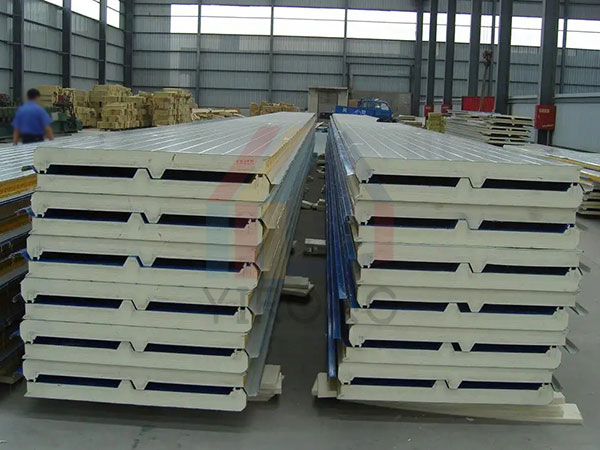Zhengzhou, Henan Province, China
Now Contact: Do you need PU/EPS/Rock Wool sandwich panels?
Zhengzhou, Henan Province, China
Now Contact: Do you need PU/EPS/Rock Wool sandwich panels?
Polyurethane roof panels are an efficient, energy-saving, and environmentally friendly solution for roof covering, widely used in industrial plants, commercial buildings, warehouses, agricultural greenhouses, and residential roof renovations. PU roof panels have become one of the popular materials in the field of modern architecture due to their excellent thermal insulation performance, outstanding weather resistance, and lightweight high strength.

The installation process of PU roof panels usually includes the following key steps:
Preparation work: Firstly, conduct a thorough inspection of the roof base to ensure there are no cracks or looseness. If necessary, repair and reinforce it. At the same time, measure the size of the roof, cut the PU panel to the appropriate size according to the design requirements, and prepare the required installation tools and materials, such as screws, sealant, etc.
Laying waterproof layer (if there is already a waterproof layer and it is in good condition, it can be omitted): Lay a layer of waterproof membrane or apply waterproof coating on the roof base to ensure the overall waterproof performance of the roof system.
Installation of keel: According to the design drawings, install supporting keels (usually metal or wooden structures) on the roof to fix the PU panel. The installation of the keel needs to be horizontal and evenly spaced to ensure the flatness and stability of the PU board.
Laying PU panels: Lay the pre cut PU roof panels one by one on the keel in order. During the laying process, attention should be paid to the joint treatment of the board, and special sealant or waterproof tape should be used for sealing to prevent rainwater from penetrating. At the same time, use screws to firmly fix the PU board on the keel, and cover the screw heads with sealant to enhance the waterproof effect.
Detail processing: Special treatment is applied to the edges, eaves, gutters, and other details of the roof to ensure the sealing and aesthetics of the entire roof system.
Quality inspection and acceptance: After installation, a comprehensive quality inspection is conducted, including flatness of the board surface, sealing of joints, waterproof performance, etc., to ensure that the design requirements are met. Finally, it can only be officially put into use after passing the acceptance of relevant departments or third parties.